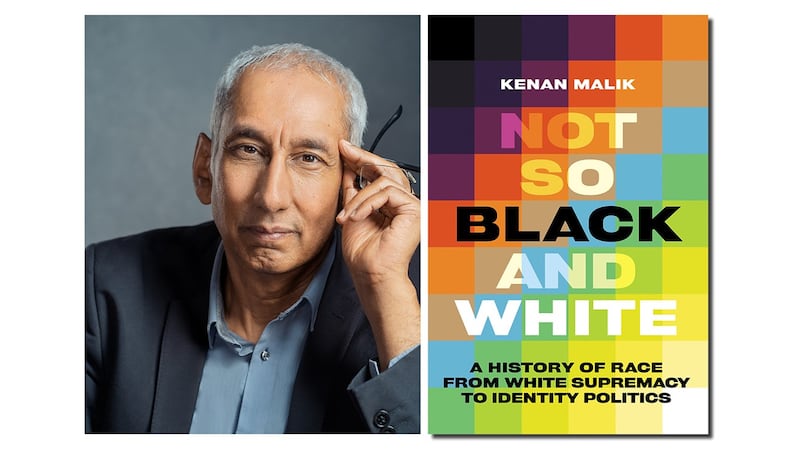Discussing ideas about racism as a white person can be tricky. Will I inadvertently cause offence? Will I be told to “stay in your lane”? What first-hand knowledge have I got of racial discrimination?
In his new book on race, acclaimed author Kenan Malik describes something this reporter has never experienced – being beaten up because of his skin colour. Malik is unable to remember the first occasion but: “By the time I was a teenager, it was difficult to think of many days when I wasn’t in a fight with racists,” he writes in Not So Black and White.
However, Malik doesn’t see a lack of shared experience as a barrier to common understanding. Had reformers of previous centuries insisted that people stick-to-type then enlightened men would never have supported women’s liberation and democratically-minded populations would never have supported minority rights. “The demand to ‘stay in your lane’ is the antithesis of politics; it is to shun forms of political engagement that can be socially transformative,” says Malik.
In that spirit, Unthinkable this week speaks to the Indian-born British writer whose book is sure to provoke lively debate. As a columnist with the Observer, Malik has parted ways with many travellers on the left – he is a staunch defender of free speech, is critical of identity politics and has highlighted a tolerance for anti-Semitism in “progressive” circles. However, his default tone is one of encouragement rather than admonishment as he seeks to navigate a better path for egalitarian campaigns.
READ MORE
“Most of my work,” he explains, “is putting contemporary issues in a historical context to allow us to see – to allow me to see – how we arrived at where we are, which is a question that is asked too little.”
Not So Black and White centres on what Malik calls “a retelling of the story of race”.
Clearly back in the 19th century the Irish were seen as racially backward ... and it’s a complex story about how the Irish became white
The short version is that racism emerged as a way of justifying inequality. It was as much about class as skin colour and early campaigns for equality reflected this. In more recent years, class politics has been displaced by identity politics which, Malik argues, has resulted in the new antiracists speaking in racial terms. Analysing the notion of “white privilege”, for example, he asks whether white is “a useful category in which to place everyone from Elon Musk to a cleaner in a Tesla factory”.
That, however, is a shortened version of his book. He explains further:
How was racism initially bound up with classism?
Kenan Malik: “It’s not that race is an economic concept. Rather it emerges out of an attempt to make sense of societies which have declared equality to be the most important issue ... and at the same time were deeply unequal, which were invested in slavery, in colonialism, and more broadly than that were unequal in terms of class, gender and so on. Race emerges as a kind of way of bridging that chasm ...
“For instance, the ancestors of today’s African Americans weren’t enslaved because they were black; they were deemed to be a distinct race – black – as a justification for their enslavement.”
You highlight the complexity of identity and race in the case of the Irish and the Jews. Can you say a bit more about that.
“Clearly back in the 19th century the Irish were seen as racially backward ... and it’s a complex story about how the Irish became white and it has been told very well many times particularly in the context of America. An important aspect of the whitening of Irish immigrants is partly because of the political power they gained but partly also because they helped to enforce the colour bar against black workers.
“The question of Jews and racists is much more complex but what happens is Jews become seen as white only very recently, only in the postwar world, and there is what some call a hyper-whiteness attached to them. One of the issues we have now is because Jews are seen as white and privileged there is a tendency to ignore the question of antiracism when it comes to Jews.”

Is identity politics entirely new?
“No ... There have always been identitarian strands in antiracist, anti-colonial movements ... which sought to use race consciousness as a means of binding together communities in the struggle against racism. But they were largely marginal until the postwar period ... There is a complex set of changes that have taken place [since] pushing identity to the forefront of the struggle for minority rights.”
Is the idea of “staying in your lane” part of that shift?
“The ‘staying in lane’ sentiment is a product of pessimism, of the breakdown of more universalist perspectives. You take an issue such as Critical Race Theory (CRT), and there are all manner of criticisms of CRT both progressive and reactionary but, I think one issue we forget which underlies much of this is social pessimism ... [the idea] that racism is permanent in some sense; that there isn’t any way of dislodging it; that equality is a chimera.
“To imagine that racism is permanent and yet we must do something about it has inevitably shaped the character of antiracism. It has contributed to a shift from campaigns for material change to largely symbolic gestures and representational fairness because, you know, if racism is permanent and all attempts to eliminate it are futile then antiracism becomes reduced to little more than a kind of public performance, or finger-wagging, or at best trying to make the unfairness a little bit less unfair.
“It also becomes something to be guarded and policed because if racism is permanent and irradicable then combating it cannot be about winning equality but carving out a space where one can assert a degree of power and autonomy, and that is really where ‘stay in your lane’ comes from.
“It expresses that shift from the material to the symbolic in the struggle against racism. We find solace in our own identity rather than in the struggle to overcome those identities and the boxes into which we have been put.”
Your takeaway message is that there has been an “unstitching of the economic and the political” and that we have to try to reverse this. But how?
“There is no easy answer to that. In a sense what you’re asking is: How can we restore class politics but a class politics that is universal and takes seriously all struggles and does not ignore questions about racism and women’s rights ... and also take seriously divisions within minority groups, and struggles that focus on material issues and political inequality, rather than the cultural and the symbolic.”
Speaking of cultural debates, one issue being discussed in Ireland is whether to drop philosopher George Berkeley’s name from the library named after him at Trinity College Dublin because of his record as a slave owner while living in the United States. Where would you stand on that?
“I think much of the questioning of the past out of which many of these campaigns arise is important and necessary because traditional accounts often whitewash the record of racism and empire, and whitewash the way enlightenment philosophers were both given to proclaim the importance of equality but also willing to abide with slavery, colonialism and racism.
“But there is a danger that we end up with an equally cartoonish view of history that is guided by contemporary means and ignores all its complexities.
[ TCD invites views on dropping Berkeley’s name from library over slave ownershipOpens in new window ]
“There is also danger that we fight not the struggles of the present but the struggles of the past ... It’s important to recognise the struggles we face today are different ones and renaming a building, or taking down a statue, adds nothing either to our understanding of a particular philosopher and takes away nothing of the racism that black people face today.”
Not So Black And White by Kenan Malik is published by Hurst (£20)

















